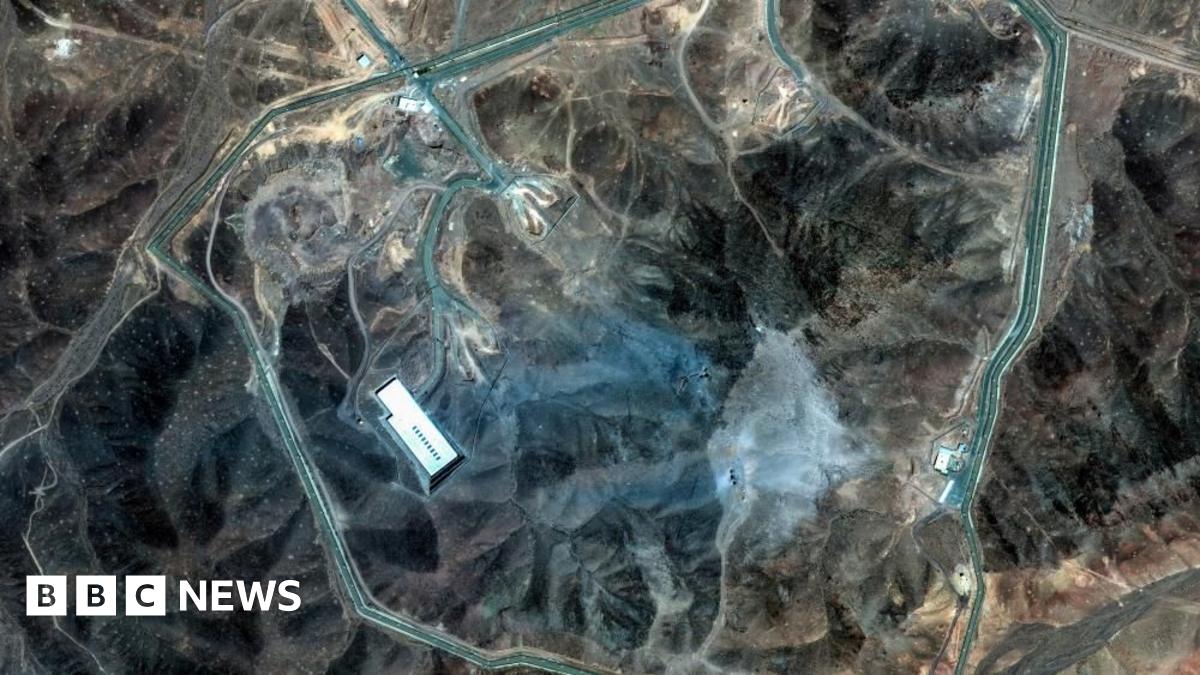Iran's Revenge: Experts Reveal Potential Targets After US Strikes – Escalation Fears Rise

Recent U.S. strikes on Iranian nuclear sites have sent shockwaves through the Middle East, raising fears of a wider regional conflict. As tensions escalate, the question on everyone's mind is: how will Iran respond? This article dives deep into the potential targets Tehran might consider for retaliation, according to expert analysis, and explores the broader implications of such actions.
The U.S. Strikes: A Calculated Risk
The Trump administration's decision to launch surprise strikes on three Iranian nuclear facilities was a bold, and controversial, move. While Washington cited concerns over Iran's nuclear ambitions as justification, critics argue the strikes significantly heightened the risk of a direct confrontation. The timing of the strikes, occurring as the U.S. transitions to a new administration, has also fueled speculation about the strategic rationale behind the action.
Iran's Retaliation Options: A Spectrum of Responses
Iran's response is unlikely to be a single, unified action. Experts suggest a range of possibilities, from covert operations to asymmetric warfare, and even direct military engagement. The choice will depend on several factors, including the perceived severity of the U.S. strikes, the political climate within Iran, and the potential for international condemnation.
Potential Targets: Where Could Iran Strike?
According to leading security analysts, here are some of the most likely targets Iran could consider:
- U.S. Military Bases in the Region: These bases, particularly in Iraq, Syria, and Kuwait, would be prime targets for missile strikes and drone attacks. Iran has demonstrated a capability to target these facilities in the past.
- Shipping Lanes in the Persian Gulf: Disrupting the flow of oil through the Strait of Hormuz, a vital waterway for global energy supplies, would inflict significant economic damage on the U.S. and its allies. Iran has the capacity to mine waterways and launch attacks on commercial vessels.
- U.S. Interests in Saudi Arabia and the UAE: Iran could target oil infrastructure, government buildings, and other assets in countries perceived as close allies of the U.S.
- Israeli Assets: Given the long-standing animosity between Iran and Israel, Israeli military installations and strategic targets could also be vulnerable.
- Cyberattacks: Iran possesses a sophisticated cyber warfare capability and could launch attacks against U.S. critical infrastructure, financial institutions, and government agencies.
Beyond Direct Attacks: Asymmetric Warfare
Beyond direct military strikes, Iran could also employ asymmetric warfare tactics, such as supporting proxy groups in Iraq, Syria, Lebanon, and Yemen to launch attacks against U.S. interests. This approach would allow Iran to retaliate without directly engaging U.S. forces, while still inflicting significant costs.
The Risk of Escalation: A Dangerous Game
Any Iranian retaliation carries the risk of escalating the conflict into a full-blown war. The U.S. has warned Iran against taking action, and has signaled its willingness to respond forcefully to any attacks. The situation is incredibly volatile, and the potential for miscalculation is high.
International Reactions and Diplomacy
The international community is urging restraint on both sides. European powers, in particular, have expressed concern over the escalating tensions and are seeking to facilitate diplomatic solutions. However, with trust between the U.S. and Iran at an all-time low, finding a path to de-escalation will be a significant challenge.
Conclusion: A Precarious Future
The recent U.S. strikes have dramatically altered the geopolitical landscape in the Middle East. Iran's response, whatever form it takes, will have far-reaching consequences. The world watches anxiously as the situation unfolds, hoping to avert a catastrophic conflict.






